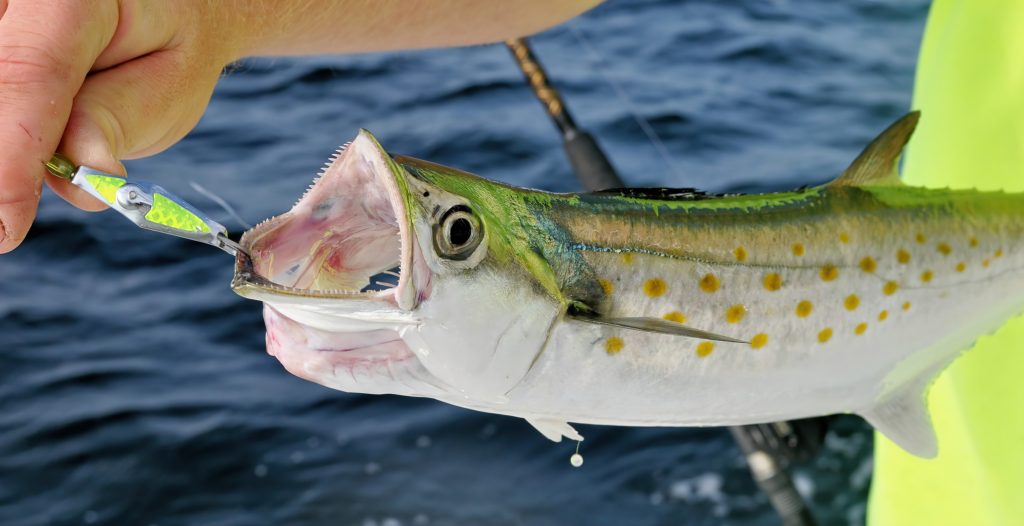- The Thrill of Spanish Mackerel Fishing
- Spanish Mackerel Biology and Distribution
- Essential Gear for Spanish Mackerel Fishing
- Top Techniques for Targeting Spanish Mackerel
- Tips for Locating and Catching Spanish Mackerel
- Adapting to Different Fishing Conditions
- Spanish Mackerel Fishing Regulations and Conservation
- Boost Your Spanish Mackerel Fishing Success with Expert Tips and Strategies
The Thrill of Spanish Mackerel Fishing
Spanish Mackerel fishing offers an adrenaline-packed experience for anglers of all skill levels. These fast-swimming, hard-fighting fish are renowned for their aggressive strikes and acrobatic displays when hooked. In this comprehensive guide, we’ll explore the biology, distribution, and essential gear needed to target Spanish Mackerel successfully, along with top techniques and expert tips to help you catch more fish.
Spanish Mackerel Biology and Distribution
Life Cycle and Feeding Patterns
Spanish Mackerel (Scomberomorus maculatus) are a migratory pelagic species found along the Atlantic coast of the United States, from the Gulf of Mexico to the New England region. These fish have a streamlined body, sharp teeth, and distinctive markings, making them easy to identify. Spanish Mackerel feed primarily on small baitfish such as anchovies, sardines, and silversides, often attacking schools with ferocity.
Prime Fishing Locations
Spanish Mackerel are most commonly found in warm coastal waters, nearshore reefs, and estuaries. Anglers can expect to encounter them around structure, including piers, jetties, and artificial reefs. They are also known to frequent tidal rips and current lines where baitfish congregate.
Essential Gear for Spanish Mackerel Fishing
Rods and Reels
A medium-light to medium power, fast-action spinning rod in the 7-8 foot range is ideal for casting lures or live bait. Pair this with a 2500-4000 size spinning reel loaded with 10-20 lb braided line for optimal performance.
Line, Lures, and Terminal Tackle
Braided line offers increased sensitivity and casting distance, while a 20-30 lb fluorocarbon leader provides abrasion resistance and stealth. Popular lures for Spanish Mackerel include spoons, jerkbaits, and topwater plugs. When using live bait, a wire leader and long-shank hook help prevent cutoffs from the mackerel’s sharp teeth.
Top Techniques for Targeting Spanish Mackerel
Casting and Retrieving
Casting lures such as spoons and jerkbaits into schools of feeding Spanish Mackerel can result in explosive strikes. Retrieve the lure quickly, imitating the erratic movement of fleeing baitfish.
Trolling and Jigging
Trolling spoons, diving plugs, or skirted lures at speeds of 4-7 knots can be highly effective for covering large areas and locating fish. Jigging with metal jigs or soft plastics can also produce results, particularly around structure or deep water.
Live Bait Techniques
Using live bait such as pilchards, mullet, or menhaden can be very effective. Free-lining or using a float rig allows the bait to swim naturally and attract nearby Spanish Mackerel.
Tips for Locating and Catching Spanish Mackerel
Identifying Productive Mackerel Habitat
Look for areas with abundant baitfish, birds diving, or surface activity indicating feeding mackerel. Structure and current lines can also hold fish.
Using Electronics and Maps
Modern fish finders and GPS units can help locate productive fishing spots and track fish movements. Study charts and maps to identify potential hotspots.
Adapting to Different Fishing Conditions
Weather and Tides
Spanish Mackerel are sensitive to changes in weather and tidal conditions. Overcast days, strong currents, and moving tides can improve fishing success.
Time of Day and Seasonal Factors
Spanish Mackerel are most active during early morning and late afternoon hours. Spring and fall are prime seasons for targeting these fish, as they migrate along the coast.
Spanish Mackerel Fishing Regulations and Conservation
Size and Bag Limits
Fishing regulations for Spanish Mackerel vary by state and region. It is essential to familiarize yourself with local rules regarding minimum size limits and daily bag limits before heading out on the water.
Ethical Angling Practices
Practicing catch and release or only keeping what you plan to consume helps preserve the Spanish Mackerel population for future generations. Use circle hooks when fishing with live bait to minimize deep hooking and reduce stress on the fish during the release process.
Boost Your Spanish Mackerel Fishing Success with Expert Tips and Strategies
With the right gear, techniques, and understanding of Spanish Mackerel behavior, you can experience the thrill of catching these hard-fighting fish. By following the advice in this guide and adapting to local conditions, you can improve your success on the water and enjoy the excitement that Spanish Mackerel fishing has to offer. Remember always to follow local regulations and practice ethical angling to ensure a sustainable fishery for years to come.

